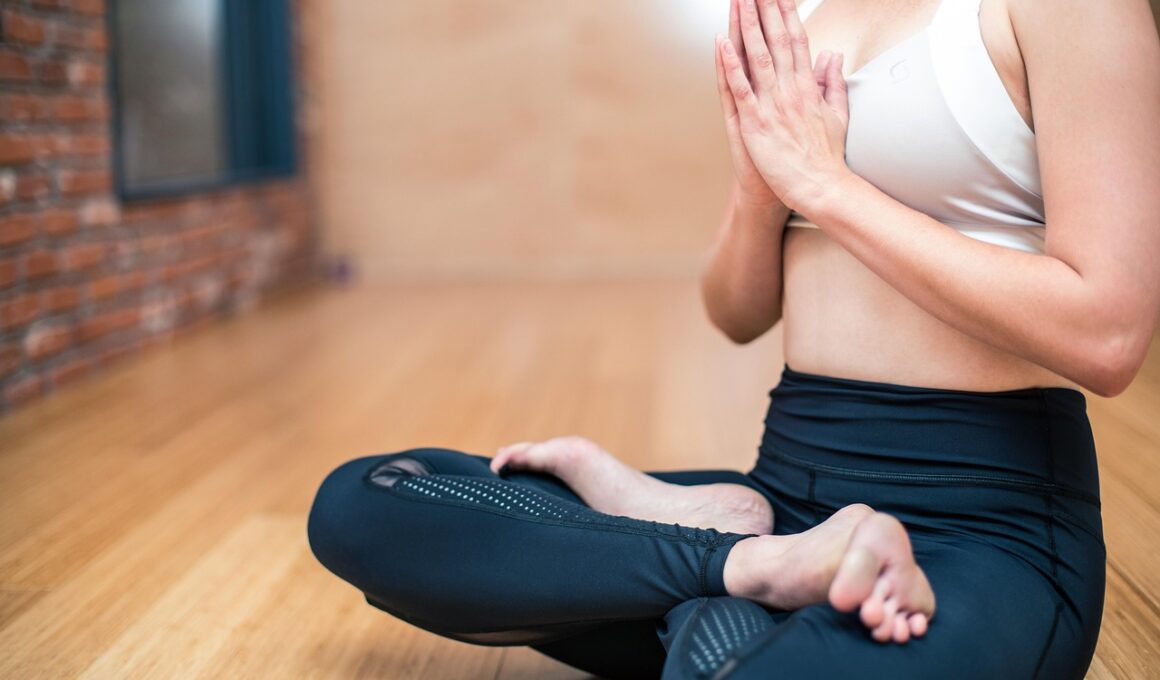Understanding the Importance of Core Strength for Better Posture
Core strength plays a vital role in maintaining better posture. It is essential for overall stability and balance, influencing body alignment and movement. The core includes muscles around the abdomen, lower back, hips, and pelvis, which provide support during various activities. When these muscles are strong, they keep your spine aligned, reducing strain and stress on the body. This not only contributes to better posture but can also enhance performance in physical activities. A strong core helps in reducing the risk of injury by providing a solid foundation. Many people, especially those with sedentary lifestyles, struggle with weak core muscles which can lead to postural problems. Connecting the importance of core strength to daily tasks highlights its relevance. Having strong core muscles allows individuals to perform activities like sitting, standing, and walking with greater ease and efficiency. Furthermore, incorporating core-strengthening exercises into your routine can lead to long-term benefits. If you prioritize core strength, you are investing in your body’s overall health, which can improve posture dramatically, resulting in a more confident appearance and diminished back pain.
Along with physical activity, awareness about body mechanics contributes to better posture. When you engage your core muscles, you should also practice proper techniques while sitting, lifting, or bending. Keep your back straight and shoulders back to promote proper alignment. This strategy is critical for office workers and students who spend considerable time sitting. Poor sitting habits can lead to muscle imbalances and exacerbate postural issues. Establish ergonomic workspaces that support your posture, such as using chairs that provide lumbar support. Incorporating short breaks to stretch and move can also enhance core engagement. Postural exercises, such as planks and bridges, are effective for improving core strength, and should be included in your workout regimen. When performed correctly, these exercises target multiple muscle groups, increasing strength efficiently. You can also perform activities like yoga or Pilates, known for their effectiveness in enhancing core stability and promoting mindfulness regarding posture. Combining strength training with flexibility exercises creates a balanced workout routine contributing to overall well-being. Pay attention to how your body feels during activities, as self-awareness can highlight areas that may need improvement.
Key Exercises for Core Strength
There are several core-strength exercises you can incorporate into your fitness routine. First, consider performing the plank, an excellent overall core stabilizing exercise. To do a plank correctly, maintain a straight line from head to toe while engaging your abdominal muscles. Hold this position for 20-30 seconds at first, gradually increasing duration as strength improves. Another effective exercise is the Russian twist, which targets the oblique muscles. Sit with your knees bent, lean back slightly, and rotate your torso from side to side, engaging your core. Repetition of this exercise strengthens the side abdominals over time. Additionally, including bird dogs can enhance stability while promoting coordination. Begin on hands and knees; extend an arm and opposite leg simultaneously, maintaining a flat back. Conclude this series with bicycle crunches, a dynamic movement that engages multiple core muscles. Ensure you perform these exercises with proper form to maximize benefits and reduce injury risks. Creating a weekly plan with varied exercises allows for better adaptation and steady growth in muscle strength and endurance. Consistency is vital to seeing tangible improvements in your core stability.
Nutrition also plays a significant role in core strength development and overall health. A well-rounded diet fuels your body for exercise and recovery. Focus on consuming protein-rich foods, which are vital for muscle repair and growth. Incorporate lean meats, legumes, nuts, and dairy products to provide your body with the necessary nutrients. Complex carbohydrates are essential, as they provide sustained energy for workouts. Whole grains, fruits, and vegetables supply vital vitamins and minerals that support overall health. Staying hydrated is equally important; even mild dehydration can negatively impact performance and recovery. Incorporate healthy fats, like those from avocados and fish, for their anti-inflammatory properties. Additionally, consider meal timing — consuming a balanced meal or snack both before and after workouts can have a positive effect on muscle performance and recovery. Paying attention to nutrition enhances core strength gains, allowing for optimal performance in your exercises. Overall, having a balanced diet alongside your training regimen promotes consistent improvements in strength, stability, and posture. Empower yourself with knowledge about diet to create a holistic approach toward achieving better posture.
Posture and Core Awareness
Developing awareness of your posture throughout daily activities is imperative for maintaining core strength. Simple practices can make a significant difference in how your spine aligns during daily tasks. Regular check-ins with your posture while sitting, standing, or walking can help develop positive habits. Recognize when your spine is in a neutral position: ears aligned over shoulders and hips, creating a straight line through your trunk. Adjust your positioning if you find yourself slumping or leaning forward. Strengthening the mind-body connection allows you to engage core muscles actively throughout the day. While driving, learning, or typing, maintain your core engagement for added support. During exercise, focus on squeezing your core for enhanced efficiency. This habit encourages strong muscle activation, translating into improved performance. Paying attention to your form during exercises is essential, but actively remembering to engage your core in everyday situations is just as critical. Consider integrating reminders into your routine, such as setting alarms or placing post-it notes around your workspace. With time and dedication, maintaining awareness will become second nature, significantly benefitting your posture and core strength.
Finally, developing core strength offers long-term benefits beyond posture enhancement. Strong core muscles contribute to improved athletic performance, increasing endurance for various sports and activities. They also help alleviate lower back pain, often stemming from weak abdominal and lower back muscles. By focusing on core strength training, individuals can enjoy a better quality of life as they engage in everyday activities. Furthermore, building a strong core facilitates balance, coordination, and stability, reducing the risk of falls and injuries. For older adults, maintaining a strong core is crucial to ensuring an active lifestyle. Participating in physical activity while building core strength promotes independence and mobility in daily tasks. Enhancing your core can also boost your confidence, leading to improved self-esteem in both athletic environments and social situations. As your strength increases, you’ll be more inclined to venture into new activities. Lasting lifestyle changes are possible through consistent core training. Continuous improvement leads to a healthier and more fulfilling experience in life. Prioritizing your core strength is an investment in your future well-being, making you feel and perform better in every aspect.
To summarize, core strength is essential for maintaining better posture and overall health. A strong core supports your spine, enhances stability, and can alleviate pain associated with poor alignment. Targeted exercises, nutrition, awareness, and dedication contribute to building core strength. Remember to perform exercises correctly and make ergonomic adjustments in daily life. Pay attention to your diet and ensure you consume a balanced variety of nutrients to fuel your training. Practicing mindfulness regarding your posture can create lasting habits that dramatically improve your overall alignment. By understanding the importance of core strength, individuals can enhance their well-being and transform their daily lives. Emphasize training not just within workouts but also in everyday activities. Stay committed to developing your core and bolster your posture through proactive engagement. If you implement these strategies, you can obtain long-term results that present themselves in posture, health, and even self-confidence. Ultimately, core strength is a journey combining physical effort, nutritional awareness, and mindfulness. Embrace the process as you work toward the goal of achieving a strong core and improved posture, celebrating each milestone along the way.
It is essential to recognize that enhancing core strength will require consistency and a planned approach. You may find that tracking your progress provides motivation and accountability. This may include noting the number of repetitions, duration of exercises, or even how you feel while performing them. Utilize fitness apps or journals to map out your journey. Consider setting realistic, achievable goals that are appropriate to your current fitness level to foster a sense of accomplishment. As you progress over time, gradually increase the intensity and variety of your workouts to challenge your muscles. Participating in classes, either in-person or online, can also provide inspiration while making the process enjoyable. Learning from professionals can ensure you adopt the correct techniques to support your posture effectively. Encourage friends or family to join you in your quest for better core strength, as social support can reinforce commitment and enjoyment. In conclusion, integrating several core strength components can yield improved posture and overall health benefits. Equip yourself with the knowledge and resources needed to embark on this journey, ensuring that you commit to practicing consistently over time.


